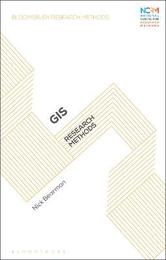
|
GIS: Research Methods
Paperback / softback
Main Details
| Title |
GIS: Research Methods
|
| Authors and Contributors |
By (author) Nick Bearman
|
| Series | Bloomsbury Research Methods |
|---|
| Physical Properties |
| Format:Paperback / softback | | Pages:192 | | Dimensions(mm): Height 216,Width 138 |
|
| ISBN/Barcode |
9781350129559
|
| Classifications | Dewey:910.285 |
|---|
| Audience | | Tertiary Education (US: College) | |
|---|
|
Publishing Details |
| Publisher |
Bloomsbury Publishing PLC
|
| Imprint |
Bloomsbury Academic
|
| NZ Release Date |
10 December 2020 |
| Publication Country |
United Kingdom
|
Description
This book provides a non-technical overview of the science and tools behind geographic information systems and geographic information science for researchers, students and academics who do not have a GIS or Geography background. The book covers the history of GIS, from John Snow's Cholera map (1854) right up to today's software and data and cutting-edge analysis techniques. Bearman goes on to cover how to find, use and evaluate the latest data sets to critiquing existing maps, highlighting limitations and common mistakes. A variety of different GIS methods including Google Maps, GPS, big data, context and choropleth maps are discussed and the pros and cons of each are highlighted allowing you to choose the appropriate method or piece of software for your own research. This is the ideal book for anyone thinking about using GIS in their own research.
Author Biography
Nick Bearman is Teaching Fellow in Geospatial Analysis in the Department of Geography, University College London, UK. He also delivers bespoke GIS training programmes to a wide variety of clients, including universities, public and private sector organisations throughout the UK and the world.
ReviewsUsing straightforward language that is easily accessible for all audiences, this book covers the foundational concepts and rigor necessary to understand the importance that GIS has in research. Readers will appreciate the mostly software-agnostic approach and the tips and tricks to address common snags one might stumble across. I would highly recommend this book to anyone who is considering getting started with GIS or works with GIS professionals and wants to have a better, high-level understanding of the technology. * Jessica Salo, Associate Professor of Geography and GIS, University of Northern Colorado, USA *
|